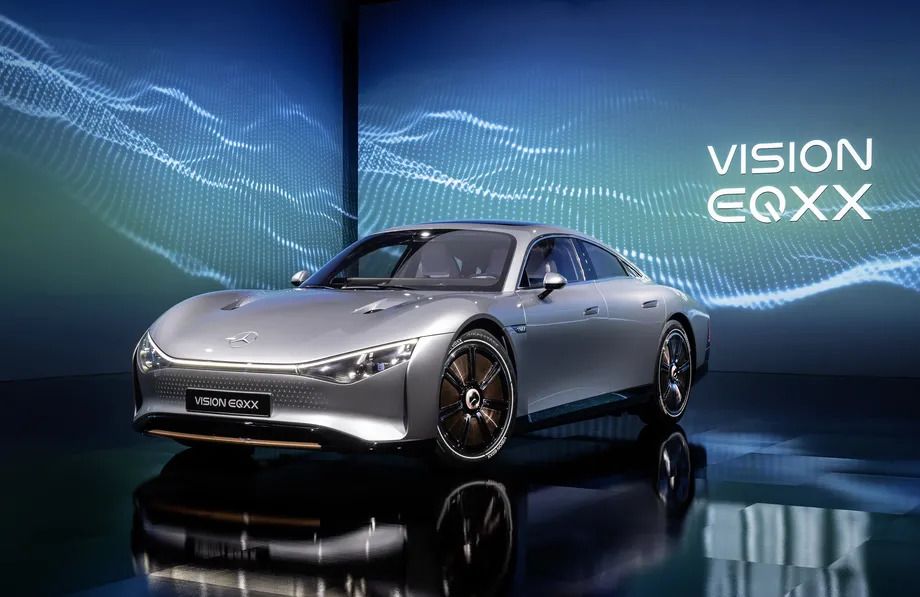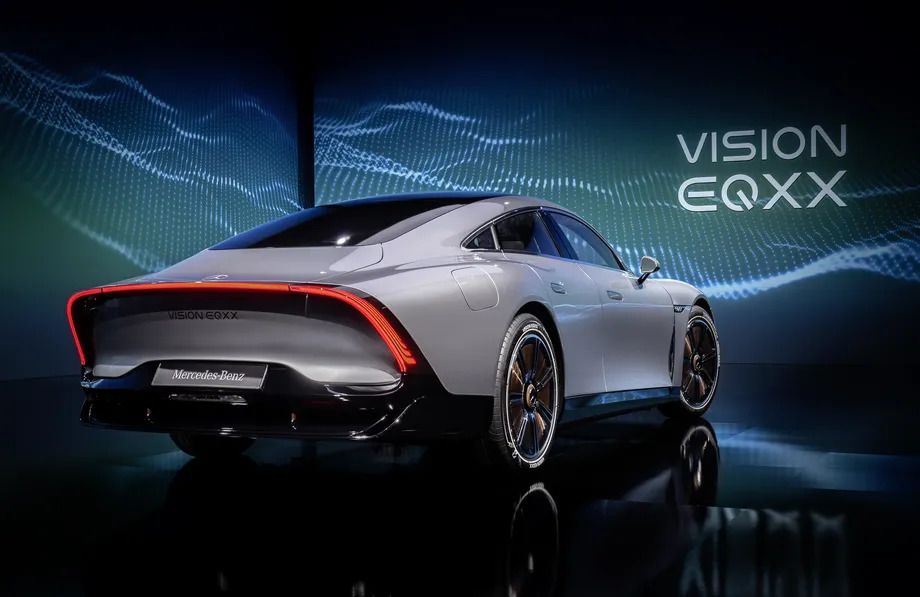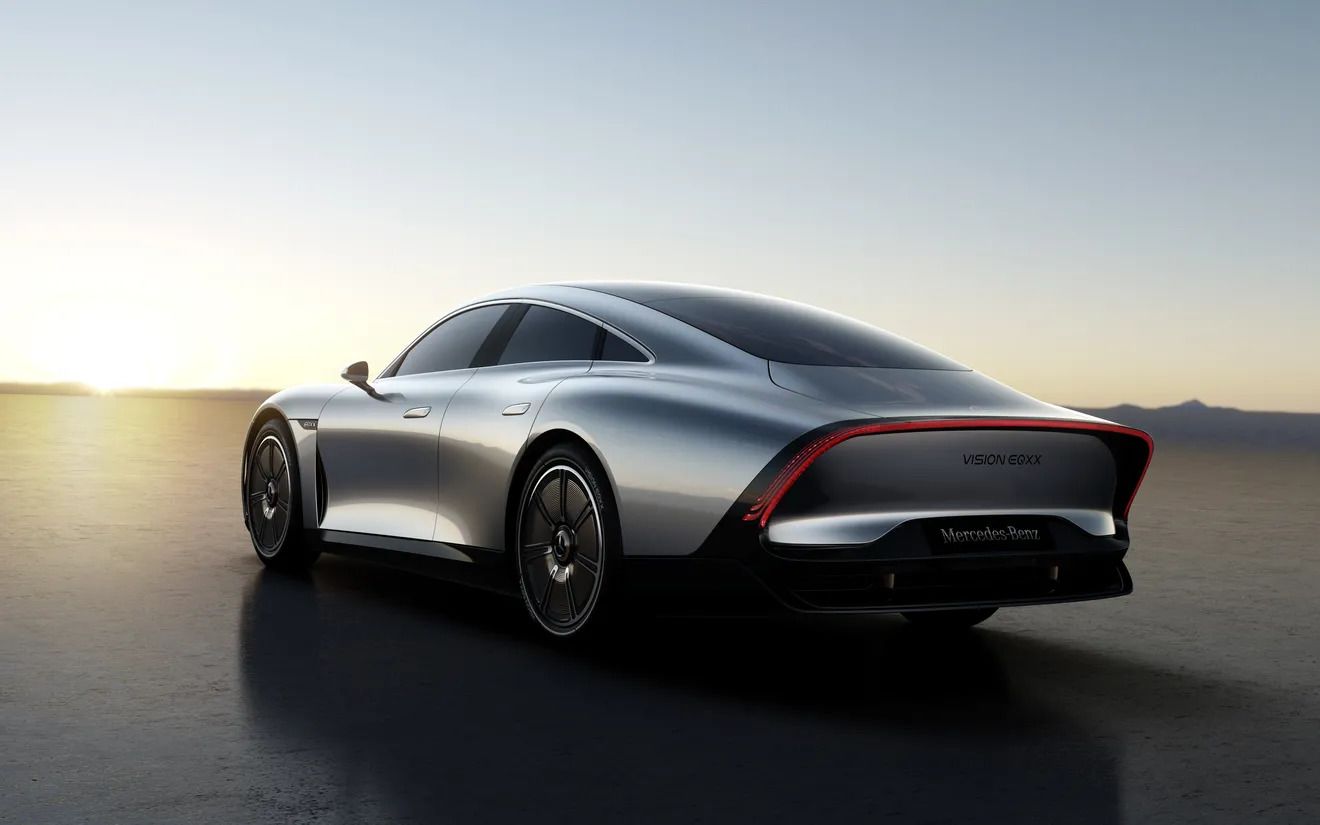Mercedes-Benz unveils sporty, ultra-long-range Vision EQXX electric concept car
Mercedes-BenzMercedes-Benz is the latest automaker to make a grab for the title of the longest-range electric vehicle with the reveal of the Vision EQXX, a solar-powered concept car capable of exceeding 1,000 kilometers (648 miles) on a single charge.
That’s enough to get the Vision EQXX from New York City to Cincinnati, or Berlin to Paris, or Bejing to Nanjing, on a single charge. And it’s impressive in contrast to other long-range EVs currently on the road today, like the Lucid Air (520 miles) and Tesla Model S Long Range Plus (402 miles). But unlike those vehicles, the Vision EQXX is just a concept with no concrete production plans. (For now.)
Mercedes, which has been teasing the vehicle for several weeks, finally unveiled it (virtually) at the Consumer Electronics Show in Las Vegas. (Like most of the major companies, Mercedes canceled its plans to attend CES in person amid a rise in COVID-19 cases.)
With its sporty intentions and sleek, futuristic design, the Vision EQXX will likely serve as the basis for a production car that could end up rivaling other luxury EVs like the Porsche Taycan, Audi E-tron GT, and Tesla Roadster.


Unlike other Mercedes concepts, the Vision EQXX is supposed to be more grounded in reality. The company says it based its range estimates on a simulation of real-life traffic conditions, fueling claims that it will consume energy at a rate of 10kWh per 100 kilometers, or more than 6 miles per kWh. Translated into fossil-fuel consumption terms, this is around the “golden figure” of 235 miles-per-gallon in the US, or 1 liter of gasoline per 100 kilometers.
To put this into perspective, Mercedes notes that 10kWh is the equivalent of using a tumble dryer or an air conditioning unit for three hours or watching 50 hours of television on a 50-inch LED screen.
But despite these simulations and estimates, Mercedes says the Vision EQXX’s superior range is “completely realistic” and that many of its technological advancements will be integrated into future production vehicles through the Mercedes-Benz Modular Architecture.
Mercedes says it achieved this energy efficiency not by cramming an oversized battery under the floor of the vehicle but by “pull[ing] out all the stops in drivetrain efficiency, energy density, aerodynamics, and lightweight design... The result is an efficiency masterpiece.”
Lightweight is certainly one way to describe a vehicle with a gross weight of 1,750 kg (3,858 lbs), putting it more in the category of compact SUVs than sports cars. Most of that weight is probably in the battery pack, which holds nearly 100 kWh of energy but also registers 50 percent less volume and 30 percent less mass than the Mercedes-Benz EQS sedan. The slippery teardrop shape is meant to reduce aerodynamic drag, with Mercedes claiming a “benchmark” coefficient of 0.17 based on a 140km/h wind tunnel test — an improvement over the EQS’ record-setting 0.20 drag coefficient.
Of course, a range estimate is just that: an estimate. It will be up to the Environmental Protection Agency in the US, as well as Europe’s Worldwide Harmonized Light Vehicle Test Procedure (WLTP), to certify any EV range independently. Most electric vehicles on the market today have a range that falls between 200-300 miles, while some earlier models have less than that. The latest crop of EVs has ranges of 250-300 miles.
Of course, EV range is highly subjective. Even the EPA’s rating system is only meant to present a snapshot under the specific conditions of the agency’s testing process. It typically excludes factors such as steep hill climbing and the effects of cold weather, which can wear down a vehicle’s battery much faster than when driving on flat surfaces or in warmer weather.
The Vision EQXX will get some help from the 117 solar cells installed in the vehicle’s roof. Developed in collaboration with Europe’s largest solar energy research institute, the solar roof is meant to offset the energy drain on the high-voltage system while also increasing the range. According to Mercedes, the solar cells can add up to 25 km of range on long-distance journeys under ideal conditions in a single day.

For now, we’ll have to take their word. Using solar cells to power an electric vehicle is no small feat. There’s a huge disparity between the amount of solar energy that the best cells can capture and what’s needed to make a two-ton vehicle move at speed.
But Mercedes isn’t the only company trying to make it happen. Aptera — a California startup that crashed in the aftermath of the Great Recession — was recently resurrected. German startup Sono Motors is also working on a solar-powered electric car. And Dutch startup Lightyear recently found a manufacturing partner to build its solar-powered electric car, the Lightyear One.
The interior of the Vision EQXX features a massive 47.5-inch screen that stretches the full width of the vehicle, a nod to the company’s new Hyperscreen infotainment display. But unlike the Hyperscreen, which is an amalgam of three separate screens set inside one solid, 56-inch piece of glass, the Vision EQXX’s screen is a one-piece display that will also feature 8K resolution and cutting edge graphics.
Mercedes says it’s working with a company called NAVIS Automotive Systems to develop “the first realtime 3D navigation system” on a screen of this size. This novel navigation system will enable “seamless zoom and scroll functions from satellite view down to a height of 10 meters in the 3D city representation,” the company says.
Like most of its competitors, Mercedes is barreling toward an all-electric future at full speed. The company says it will commit €40 billion ($47 billion) to the electrification of its lineup by 2030, including electric versions of Mercedes-Benz’s G-class wagons and AMG high-performance vehicles.
These announcements come as most major countries push to restrict the sale of internal combustion engine vehicles in the coming decades. The European Union, China, and California have all said they would ban the sale of internal combustion engine vehicles by 2035.


























